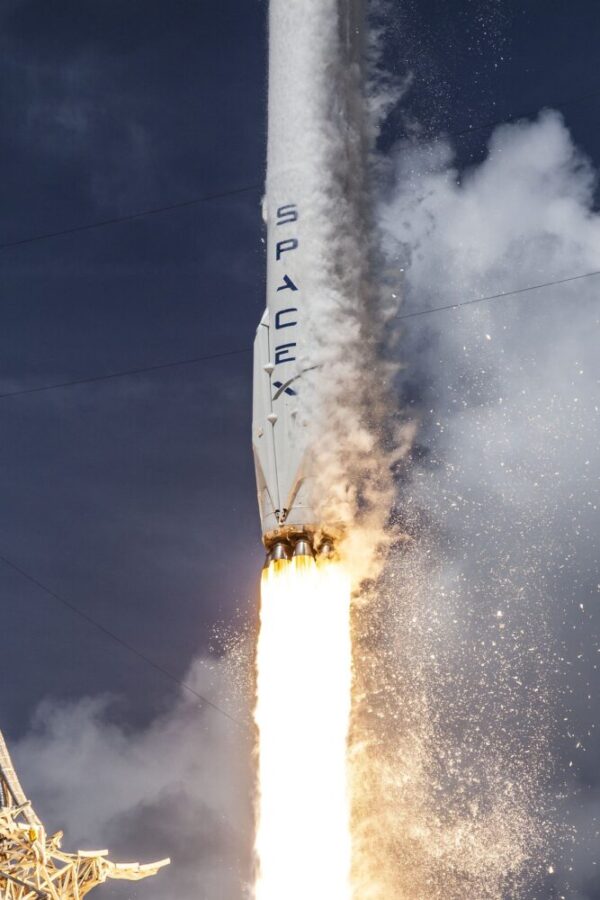
The planned launch of SpaceX’s Starship rocket in March is designed to show that the craft can carry crews into space. However, competition for satellite broadband is fueling the space economy closer to earth.
If you talk on a cell phone, watch television, or consult a digital map for directions, you are using space technology. That is because the signals received by your devices are coming from space.
No, aliens are not helping you find your way to a restaurant, broadcasting television shows, or allowing you to stay in touch with friends and family. However, satellites are.
According to the Union of Concerned Scientists (UCS), there were 5,465 functioning satellites orbiting the earth in mid-2022. Most, 3,433, were launched from the United States. China was second with 541 launches.
The vast majority of U. S. satellites, 2,992, are being used for commercial purposes. Only 237 American satellites are being used for military purposes.
The discrepancy between commercial and military satellites demonstrates the shift in the new space race from geopolitical use to business use.
Satellite Broadband
Leading that shift is the proliferation of broadband satellites. These are satellites that circle the planet in Low Earth Orbit (LEO). They get a signal from the ground which is then sent to a receiver on earth.
Most people without broadband access live in rural areas that are more difficult and expensive to access with cable or fiber.
About 90 percent of American households have broadband access, according to Leichtman Research Group. That still leaves tens of millions of Americans without broadband access. Worldwide, a 2021 United Nations study found that almost 3 billion people were without broadband.
Satellite Broadband Market
The global satellite communications market, valued at 25.8 billion in 2021, is expected to grow to $61.5 billion by 2031, according to a report by Allied Market Research.
Investment banking firm Morgan Stanley sees the space industry generating up to $1 trillion in revenue by 2040. The investment banking firm expects related industries, such as defense and IT hardware to benefit from space ventures. However, “in the short term”, it anticipates satellite broadband will account for 50 to 70 percent of the growth in the space economy.
“The demand for data is growing at an exponential rate, while the cost of access to space (and, by extension, data) is falling by orders of magnitude,” said Adam Jonas, Morgan Stanley equity analyst. “We believe the largest opportunity comes from providing Internet access to under- and unserved parts of the world, but there also is going to be increased demand for bandwidth from autonomous cars, the Internet of things, artificial intelligence, virtual reality, and video.”
Big Guns Firing Rockets
Major players in the connectivity industry have jumped into the space economy pairing with rocket and satellite companies.
Elon Musk’s Starlink was one of the early space companies. It has partnered with T-Mobile. AT&T has linked up with AST SpaceMobile and Verizon is collaborating with Amazon’s Project Kuiper.
That competition and reusable rockets have been pushing launch prices down. Until recently, a rocket launch would cost hundreds of millions of dollars. SpaceX, which recently raised rates, fires off a Falcon 9 rocket for $67 million while Rocket Lab propels satellites into LEO for as low as $5 million.
Beyond Broadband
In addition to connectivity, satellites can also harvest information. Data gathered by satellites are used to make weather forecasts and monitor climate change.
Some companies use satellites to aid in logistics and related functions. For instance, insurance company Swiss Re is using satellite information to access damages, calculate loss, and deploy resources for clients.
Pharmaceutical companies have been on the space bus for decades making use of the space shuttle and space stations to conduct research in low gravity. As far back as 1995, Bristol Myers Squibb was sending fungi to the international space station for experiments.
Like space itself, investment and development opportunities beyond earth are vast.
Read More:
- Tips for Preparing and Filing Your Small Business Taxes Correctly
- Effective Ways to Save Money on Business Taxes
- Should You Be Paying to File Your Taxes?
Come back to what you love! Dollardig.com is the most reliable cashback site on the web. Just sign up, click, shop, and get full cash back!